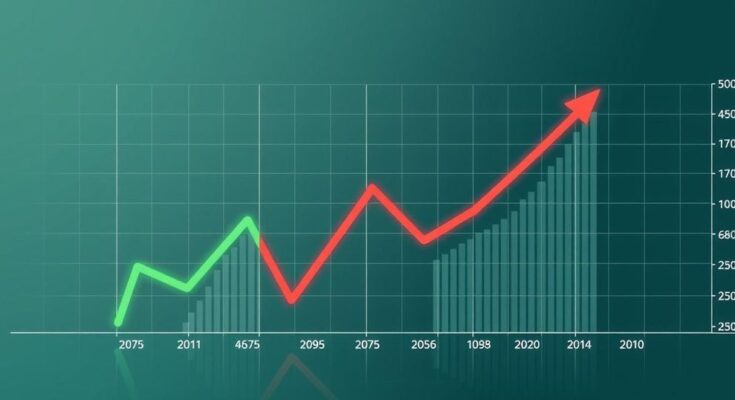The South African rand weakened after the SARB kept interest rates steady at 7.50%. The rand was trading at 18.22 to the dollar, influenced by the U.S. Federal Reserve’s recent decisions. Governor Kganyago mentioned ongoing inflation risks suggesting rates may remain high longer. Market indicators showed the Top-40 index down by 0.8%, while government bond yields slightly improved.
The South African rand experienced a decline following the decision of the South African Reserve Bank (SARB) to maintain its key interest rate at 7.50%. As of 1352 GMT, the rand traded at 18.22 against the dollar, reflecting a 0.5% depreciation from its prior close. Additionally, the U.S. dollar surged approximately 0.7% against a variety of currencies, as investors processed the U.S. Federal Reserve’s decision to keep interest rates unchanged and revise economic growth expectations downwards.
Central Bank Governor Lesetja Kganyago indicated that despite a pause in the rate-cutting cycle, the potential for policy adjustments among major central banks exists this year. He noted, “Some policy adjustments by major central banks are still expected this year, but rates are likely to remain high for longer, given new inflation risks.” This statement underscores the ongoing concerns about inflationary pressures arising from external factors, including international trade tensions.
In the stock market, the Top-40 index observed a decrease of approximately 0.8%. Conversely, South Africa’s benchmark 2030 government bond displayed slight strength, with yields decreasing by 3.5 basis points to 9.05%. This mixed financial landscape highlights the complex dynamics at play in South Africa’s economy amidst external and internal challenges.
In summary, the South African rand’s weakness is attributed to the SARB’s decision to hold interest rates steady amidst rising inflation risks and international uncertainties. The absence of a rate cut indicates a cautious approach by the central bank, while market reactions reflect broader economic conditions. The performance of the stock market and bonds serves as a reminder of the delicate balance South Africa faces in its fiscal landscape.
Original Source: www.cnbcafrica.com




